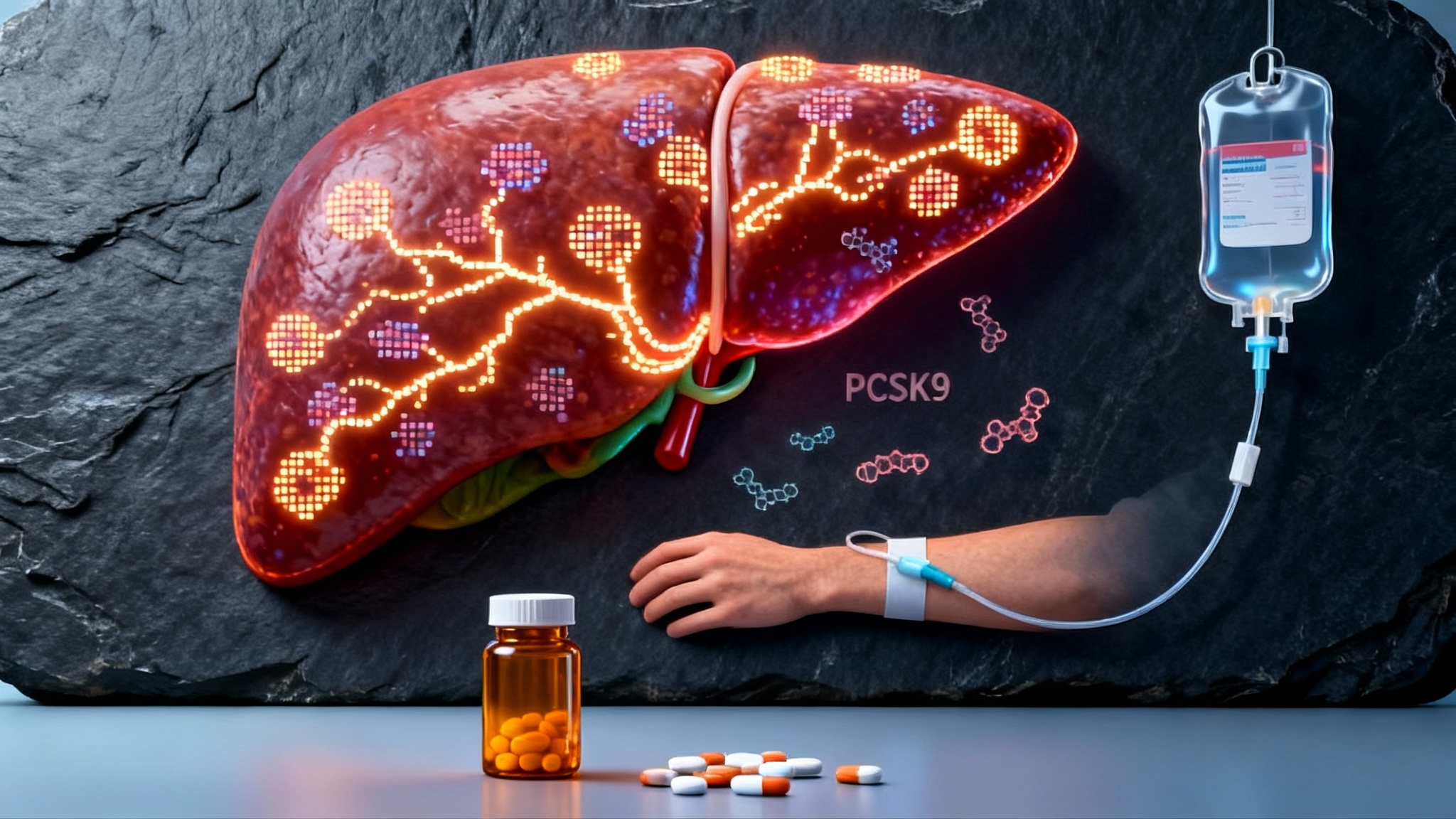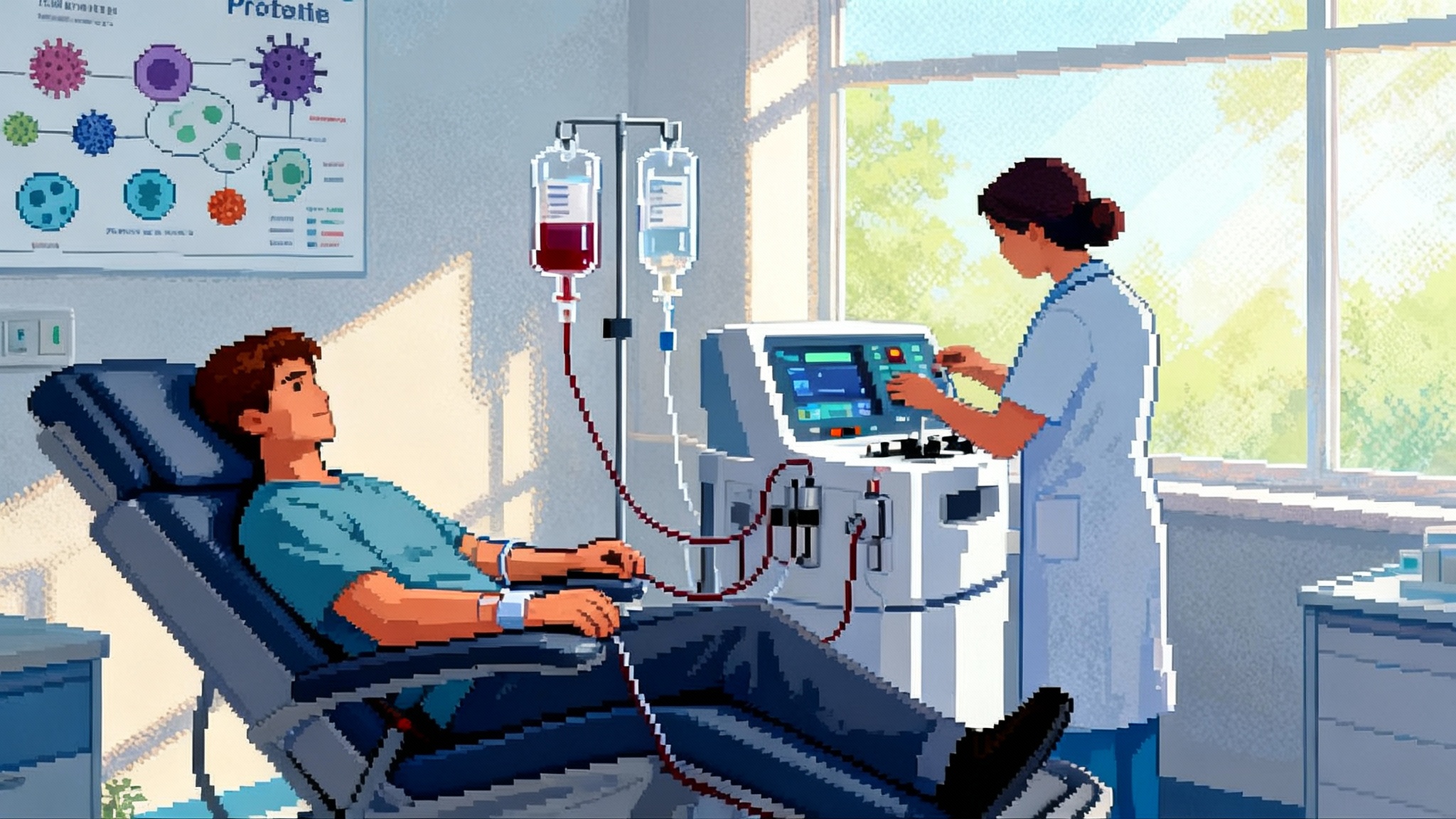PCSK9’s 2025 tipping point: oral pills vs one-shot edits
In 2025, PCSK9 moved from target to strategy. Verve's in vivo base edit delivered dose dependent LDL cuts while oral PCSK9 pills from AstraZeneca and Merck posted pivotal wins, setting up a permanence versus reversibility showdown.

The PCSK9 tipping point in 2025
Cardiovascular disease remains the top global killer, and LDL cholesterol is its most modifiable fuel. After years of theory, 2025 turned PCSK9 into a concrete product strategy. A one-time in vivo base edit promises a durable LDL reset, while oral PCSK9 inhibitors aim to deliver biologic-level potency with statin-like simplicity. The real trade is permanence versus reversibility, and that choice touches safety, adherence, pricing, and policy.
Why PCSK9 matters
PCSK9 marks LDL receptors for degradation in the liver. Less PCSK9 means more receptors recycled to the hepatocyte surface, which pulls more LDL from circulation. Human genetics shows that lifelong PCSK9 loss of function lowers events, which paved the way for antibodies and siRNA therapies. The delivery dream has been twofold: make suppression permanent with a single treatment, or make it as easy as a pill with equal potency.
One-shot editing moves from idea to data
In early 2025, Verve reported dose dependent LDL reductions with its in vivo base editor VERVE-102 in Phase 1b, including an average cut near 53 percent and a maximum near 69 percent at higher doses. The program picked up FDA Fast Track and U.S. IND clearance for expansion. For specifics, see the Verve Phase 1b update. A single infusion that cuts LDL by half and holds that effect would be a step change if long-term safety remains clean.
Eli Lilly’s move in June 2025 to acquire Verve signaled that big pharma views one-and-done as a plausible backbone for primary prevention, with the scale to fund manufacturing, registries, and payer frameworks.
Pills get serious
AstraZeneca’s oral PCSK9 inhibitor AZD0780 posted roughly 50 percent LDL reduction in the PURSUIT Phase 2b program presented in April, including strong add-on effects atop statins and ezetimibe. Merck followed with enlicitide decanoate, reporting multiple late-stage wins in June and September 2025. The message is simple: if a pill can match antibody-grade LDL lowering, the convenience advantage is enormous for population-scale prevention.
Permanence versus reversibility
- When permanence helps: Very high inherited risk, such as familial hypercholesterolemia, where a lifetime LDL reset can remove adherence decay.
- When reversibility shines: Broader primary prevention where patients want to start, stop, titrate, and combine without making a genomic change.
- Combination logic: Orals will likely stack with statins. Editing could be paired later with low-dose statins if deeper lowering is needed.
Safety at ten years, not ten weeks
- Editing watchlist: Off-target edits, clonal expansion, liver safety, immunogenicity to editor components, and interactions with infections or other drugs. PCSK9 biology feels comfortable, but the editing apparatus is new and the liver turns over slowly.
- Oral watchlist: Off-target pharmacology, drug interactions in polypharmacy, and tolerability in older adults. Reversibility provides a safety valve if signals emerge.
These debates connect to how we validate risk reduction and biomarkers across aging medicine, informed by efforts like 500k proteomes will redefine biomarkers and policy shifts described in FDA’s LDT reversal and biomarkers.
Adherence and the economics of forgetting
Prevention lives or dies on routine. Statins are effective and cheap, yet long-term adherence lags. Twice-yearly siRNA improved outcomes by bounding adherence. A one-shot edit removes adherence risk entirely, but shifts the challenge to pricing and financing. Orals fight in the PBM arena where list prices, rebates, and step therapy dominate. The hidden economic win for both is avoided events over decades.
Regulatory paths diverge
For orals, regulators can lean on LDL as a surrogate with outcomes trials to confirm risk reduction. For editing, expect scrutiny on manufacturing consistency, on-target efficiency, off-target profiling, and multi-year follow-up, with LDL as the near-term yardstick and prospective outcomes cohorts to validate benefit.
A practical midlife playbook
- Start earlier, aim lower: Use lifetime risk and coronary calcium to stratify midlife patients. Tie LDL goals to cumulative exposure.
- Pick the lever that fits: High inherited risk may favor a one-time edit. Earlier in the curve, an oral PCSK9 plus a moderate statin can deliver biologic-level lowering with daily simplicity.
- Monitor with purpose: Lipids remain the key readout. Early after editing, track liver function and imaging as needed; for orals, manage interactions and tolerability.
These choices echo a broader prevention wave across metabolic and aging medicine, alongside tools like GLP-1s at the 2025 inflection.
What happens next
- More editing data with time: Longer follow-up on LDL durability, editing rates by dose, and any exposure-related safety signals.
- Oral readouts and optimization: Additional late-stage data, food-effect clarity, interaction profiles, and real-world adherence.
- Pricing and payer frameworks: Outcomes-tied contracts for editing, and access-friendly pricing for orals that beats injectable friction.
The bottom line
2025 delivered a portfolio, not a single winner. One-time PCSK9 editing advanced from concept to human data with regulatory momentum and a strategic buyer. Oral PCSK9s from AstraZeneca and Merck showed that pill-based potency can rival biologics. The right answer will depend on risk, age, preference, and access, but all roads point to durable LDL suppression that is easier to live with.
Finally, a note on evidence: a lasting LDL reset demands years of observation, and pill-based biologic potency needs clean, reproducible late-stage trials with outcomes validation. Both are within reach. The tipping point is what it looks like when biology and delivery start to align.








